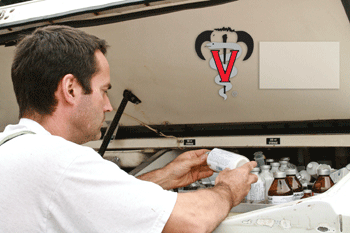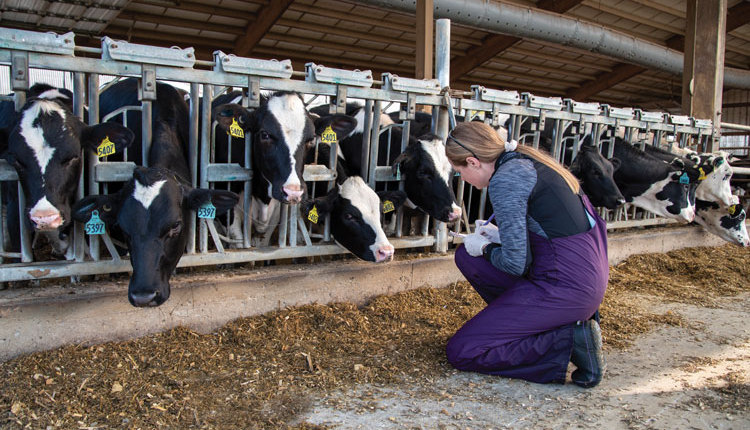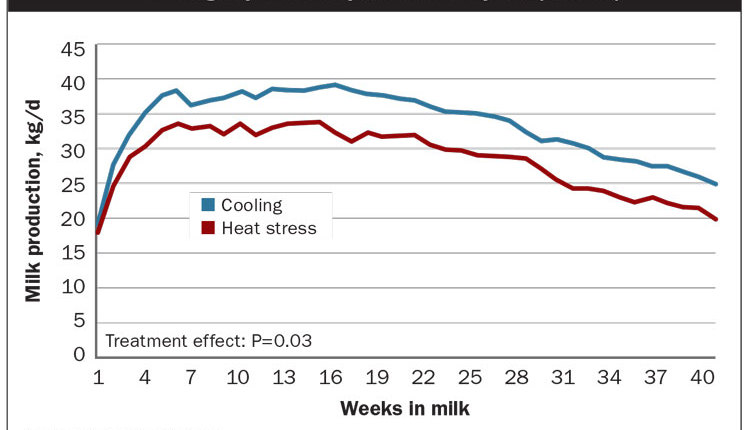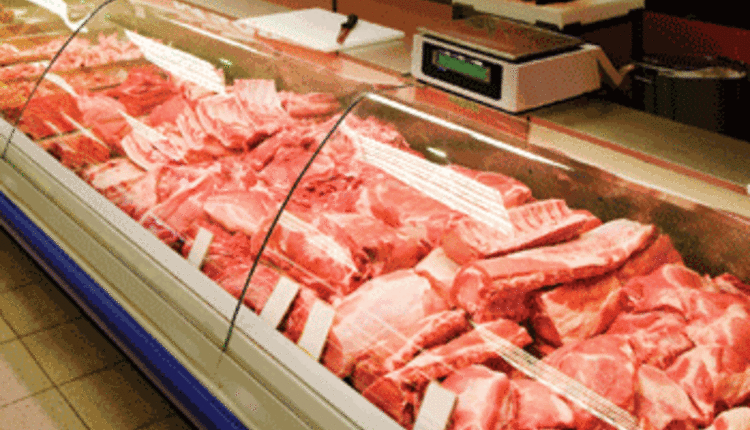The authors are an assistant professor, Department of Animal Science, North Dakota State University, and veterinary physiology and pharmacology at Texas A&M, respectively.

Milk and meat are our products, but we work with animals, living beings that require care and management to ensure their welfare. One of our tools includes medications.
In the U.S., in order for a drug to be used legally in dairy cows or other animals (including human beings), it must be approved for use by the FDA. In addition, for drugs to be used in food animals, the manufacturer must perform tests to determine appropriate post-treatment periods in which milk, meat, or both cannot be sold or consumed. For new drugs, the testing required to gain FDA approval typically takes many years and costs millions of dollars.
All drugs modify the physiology or body functions of the animal or the disease-causing organisms. Antibiotic or anti-parasitic drugs work by interfering with a process necessary for the life of the infectious organisms such as the formation of cell walls, the creation of proteins, or the performance of key metabolic or reproductive processes. Some drugs mimic substances produced by the cow. An example would be the hormone drugs used in synchronization protocols.
Other drugs work by preventing or causing physiologic processes. For example, the local anesthetic drug lidocaine prevents the transmission of the "pain" message so an animal does not feel the pain of a surgical incision or dehorning.
Rx and OTC
As part of the approval process, drugs are approved for prescription only (Rx) or over the counter (OTC). If a drug has sufficient toxicity, potential for harm, or method of use that it is not safe except under the professional supervision of a veterinarian, such that adequate instructions for use cannot be prepared, it must be labeled Rx. Therefore, it can be dispensed by or upon the order of a licensed veterinarian only. If the drug can be used safely or if its methods of use are safe without a veterinarian, the drug is labeled OTC.
In addition to being Rx only, some drugs also are "controlled," meaning that there is a risk that they may be abused by humans. Therefore, the veterinarian must obey strict record-keeping and security measures. Examples include anabolic steroids and some types of pain-relieving drugs such as morphine.
Prescription drugs (look for the Rx symbol) require a veterinarian's involvement and also require specific information on the label. Rx drugs must have a label that states the name and address of the veterinarian or dispenser, any directions for use, and cautionary statements. In addition, all prescription drugs must have a label that states: "Caution: Federal law restricts this drug to use by or on the order of a licensed veterinarian." These drugs should be dispensed by a veterinarian with whom you have a relationship so that the veterinarian understands your animals, your operation, and your management.
In addition to indicating whether a drug is Rx or OTC, drug labels (package inserts) contain a wealth of information about a drug and how it is to be used. Perhaps the most important information is the drug name. Each drug has only one nonproprietary (sometimes called generic) name, but the drug may be marketed under several different brand names.
In addition, the label contains the drug indications (what disease or condition it is approved to treat), what class of animal it is approved for use in (for example, dairy or beef cattle or both), drug dosing information, what precautions should be taken, what side effects might be seen, and how long to withhold milk and meat from sale. All of the information on the label is based on the extensive research that was conducted in order to gain approval for use from the FDA.
One special category of drug use that requires additional labeling and regulatory oversight is extra-label use. Extra-label use simply is use of a drug in any manner not specified on the label, whether the drug is Rx or OTC. Extra-label could be at a different dose, a different route, for a different indication (for instance, the label says respiratory disease and you are treating footrot), for a different duration, or in a different class of animals. This type of drug use can be safe and effective, but it must be undertaken cautiously because it entails using a drug in a manner that has not been specifically approved by the FDA, as use according to the label has been.
In addition, it is important to remember that extra-label use usually means meat and milk withholding periods must be extended longer than the ones stated on the drug label. Extra-label drug use requires the presence of a valid veterinarian-client-patient relationship, one in which the following are true:
1. The veterinarian has assumed responsibility for making clinical judgments regarding the health of the animal(s) and the need for medical treatment, and the client has agreed to follow the veterinarian's instructions.
2. The veterinarian has sufficient knowledge of the animal(s) to initiate at least a general or preliminary diagnosis of the medical condition of the animal(s). This means that the veterinarian has recently seen and personally is acquainted with the keeping and care of the animal(s) by virtue of an exam of the animal(s), or by medically appropriate and timely visits to the premises where the animal(s) are kept.
3. The veterinarian is readily available, or has arranged for emergency coverage, for follow-up evaluation in the event of adverse reactions or the failure of the treatment regimen.
Several categories of drugs are not permitted to be used extra-label. Drugs in feed may not be used extra-label. Drugs not approved by the FDA may not be used extra-label. Drugs used for production purposes, such as synchronization products, may not be used extra-label. And laypersons may not decide to use drugs extra-label.
You can't use these
In addition, specific drugs are prohibited from use in food animals. At presstime, they include chloramphenicol, clenbuterol, diethylstilbestrol, dimetridazole, ipronidazole, other nitroimidazoles (such as metronidazole), furazolidone, nitrofurazone, other nitrofurans, fluoroquinolones (except labeled uses), and glycopeptides (such as vancomycin). Phenylbutazone is banned in female dairy cattle 20 months of age or older.
In addition, sulfonamide drugs are not permitted in lactating dairy cows, except for the approved uses of sulfadimethoxine and two other sulfa drugs not currently marketed in the U.S. This means that there is no extra-label use of sulfonamides in lactating dairy cows. Remember that extra-label means anything not on the label, including duration, dose, and indication.
Also, when your veterinarian recommends or prescribes the extra-label use of an over-the-counter drug, that drug becomes just like a prescription drug. It requires additional labeling, extra-label withdrawal time estimates, and oversight by the veterinarian - essentially, it is no longer an over-the-counter drug. Lay persons are not permitted to use OTC drugs extra-label without their being dispensed or ordered by a licensed veterinarian.
For more information:
Food and Drug Administration Center for Veterinary Medicine
http://www.fda.gov/AnimalVeterinary/default.htm
Database of Approved New Animal Drugs in the U.S.
http://www.accessdata.fda.gov/scripts/animaldrugsatfda
Extra-label Use of FDA Approved Drugs in Animals
http://www.fda.gov/AnimalVeterinary/ResourcesforYou/FDAandtheVeterinarian/ucm077390.htm
Click here to return to the Animal Care E-Sources
100325_209

Milk and meat are our products, but we work with animals, living beings that require care and management to ensure their welfare. One of our tools includes medications.
In the U.S., in order for a drug to be used legally in dairy cows or other animals (including human beings), it must be approved for use by the FDA. In addition, for drugs to be used in food animals, the manufacturer must perform tests to determine appropriate post-treatment periods in which milk, meat, or both cannot be sold or consumed. For new drugs, the testing required to gain FDA approval typically takes many years and costs millions of dollars.
All drugs modify the physiology or body functions of the animal or the disease-causing organisms. Antibiotic or anti-parasitic drugs work by interfering with a process necessary for the life of the infectious organisms such as the formation of cell walls, the creation of proteins, or the performance of key metabolic or reproductive processes. Some drugs mimic substances produced by the cow. An example would be the hormone drugs used in synchronization protocols.
Other drugs work by preventing or causing physiologic processes. For example, the local anesthetic drug lidocaine prevents the transmission of the "pain" message so an animal does not feel the pain of a surgical incision or dehorning.
Rx and OTC
As part of the approval process, drugs are approved for prescription only (Rx) or over the counter (OTC). If a drug has sufficient toxicity, potential for harm, or method of use that it is not safe except under the professional supervision of a veterinarian, such that adequate instructions for use cannot be prepared, it must be labeled Rx. Therefore, it can be dispensed by or upon the order of a licensed veterinarian only. If the drug can be used safely or if its methods of use are safe without a veterinarian, the drug is labeled OTC.
In addition to being Rx only, some drugs also are "controlled," meaning that there is a risk that they may be abused by humans. Therefore, the veterinarian must obey strict record-keeping and security measures. Examples include anabolic steroids and some types of pain-relieving drugs such as morphine.
Prescription drugs (look for the Rx symbol) require a veterinarian's involvement and also require specific information on the label. Rx drugs must have a label that states the name and address of the veterinarian or dispenser, any directions for use, and cautionary statements. In addition, all prescription drugs must have a label that states: "Caution: Federal law restricts this drug to use by or on the order of a licensed veterinarian." These drugs should be dispensed by a veterinarian with whom you have a relationship so that the veterinarian understands your animals, your operation, and your management.
In addition to indicating whether a drug is Rx or OTC, drug labels (package inserts) contain a wealth of information about a drug and how it is to be used. Perhaps the most important information is the drug name. Each drug has only one nonproprietary (sometimes called generic) name, but the drug may be marketed under several different brand names.
In addition, the label contains the drug indications (what disease or condition it is approved to treat), what class of animal it is approved for use in (for example, dairy or beef cattle or both), drug dosing information, what precautions should be taken, what side effects might be seen, and how long to withhold milk and meat from sale. All of the information on the label is based on the extensive research that was conducted in order to gain approval for use from the FDA.
One special category of drug use that requires additional labeling and regulatory oversight is extra-label use. Extra-label use simply is use of a drug in any manner not specified on the label, whether the drug is Rx or OTC. Extra-label could be at a different dose, a different route, for a different indication (for instance, the label says respiratory disease and you are treating footrot), for a different duration, or in a different class of animals. This type of drug use can be safe and effective, but it must be undertaken cautiously because it entails using a drug in a manner that has not been specifically approved by the FDA, as use according to the label has been.
In addition, it is important to remember that extra-label use usually means meat and milk withholding periods must be extended longer than the ones stated on the drug label. Extra-label drug use requires the presence of a valid veterinarian-client-patient relationship, one in which the following are true:
1. The veterinarian has assumed responsibility for making clinical judgments regarding the health of the animal(s) and the need for medical treatment, and the client has agreed to follow the veterinarian's instructions.
2. The veterinarian has sufficient knowledge of the animal(s) to initiate at least a general or preliminary diagnosis of the medical condition of the animal(s). This means that the veterinarian has recently seen and personally is acquainted with the keeping and care of the animal(s) by virtue of an exam of the animal(s), or by medically appropriate and timely visits to the premises where the animal(s) are kept.
3. The veterinarian is readily available, or has arranged for emergency coverage, for follow-up evaluation in the event of adverse reactions or the failure of the treatment regimen.
Several categories of drugs are not permitted to be used extra-label. Drugs in feed may not be used extra-label. Drugs not approved by the FDA may not be used extra-label. Drugs used for production purposes, such as synchronization products, may not be used extra-label. And laypersons may not decide to use drugs extra-label.
You can't use these
In addition, specific drugs are prohibited from use in food animals. At presstime, they include chloramphenicol, clenbuterol, diethylstilbestrol, dimetridazole, ipronidazole, other nitroimidazoles (such as metronidazole), furazolidone, nitrofurazone, other nitrofurans, fluoroquinolones (except labeled uses), and glycopeptides (such as vancomycin). Phenylbutazone is banned in female dairy cattle 20 months of age or older.
In addition, sulfonamide drugs are not permitted in lactating dairy cows, except for the approved uses of sulfadimethoxine and two other sulfa drugs not currently marketed in the U.S. This means that there is no extra-label use of sulfonamides in lactating dairy cows. Remember that extra-label means anything not on the label, including duration, dose, and indication.
Also, when your veterinarian recommends or prescribes the extra-label use of an over-the-counter drug, that drug becomes just like a prescription drug. It requires additional labeling, extra-label withdrawal time estimates, and oversight by the veterinarian - essentially, it is no longer an over-the-counter drug. Lay persons are not permitted to use OTC drugs extra-label without their being dispensed or ordered by a licensed veterinarian.
For more information:
Food and Drug Administration Center for Veterinary Medicine
http://www.fda.gov/AnimalVeterinary/default.htm
Database of Approved New Animal Drugs in the U.S.
http://www.accessdata.fda.gov/scripts/animaldrugsatfda
Extra-label Use of FDA Approved Drugs in Animals
http://www.fda.gov/AnimalVeterinary/ResourcesforYou/FDAandtheVeterinarian/ucm077390.htm
100325_209









